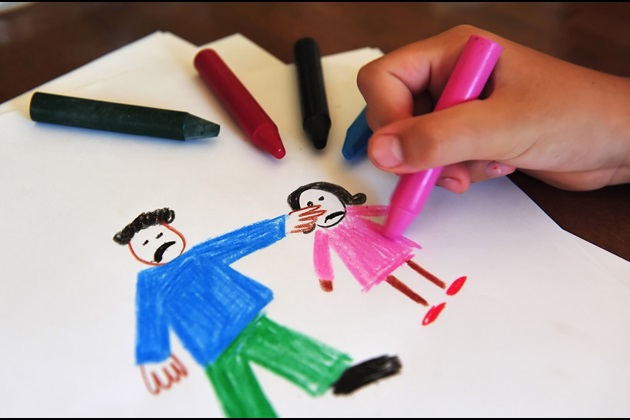Senior lecturer Zoe Clarke explains how to spot the signs of neglect, maltreatment and abuse and raise concerns to keep children safe
Safeguarding is the responsibility of all individuals who have contact with children and young people, including professionals from health, schools and the wider community. This means it is also the responsibility of student nurses across all fields of nursing.
But what is safeguarding exactly? The NSPCC defines it as the process of protecting children and young people from harm and allowing them to live a life free from abuse, neglect and maltreatment.
It aims to ensure all children and young people grow and develop in a safe environment and have the best possible life outcomes.
So how can you spot signs of abuse? And how should you report them?
What are the main types of abuse?
Physical abuse
A form of abuse which may involve hitting, shaking, throwing, poisoning, burning or scalding, drowning, suffocating or otherwise causing physical harm to a child. Physical harm may also be caused when a parent or carer fabricates the symptoms of, or deliberately induces, illness in a child.
Emotional abuse
The persistent emotional maltreatment of a child so as to cause severe and persistent adverse effects on the child’s emotional development. Examples may include: parents/carers not engaging with children, being heavily critical, a lack of warmth, no celebration of the child’s achievements.
Sexual abuse
Involves forcing or enticing a child or young person to take part in sexual activities, not necessarily involving a high level of violence, whether or not the child is aware of what is happening.
This may also include non-contact activities, such as involving children in looking at, or in the production of, sexual images, watching sexual activities, encouraging children to behave in sexually inappropriate ways, or grooming a child in preparation for abuse (including via the internet).
Neglect
The persistent failure to meet a child’s basic physical and/or psychological needs, likely to result in the serious impairment of the child’s health or development.
Other areas of safeguarding include but are not limited to:
What are the signs of abuse?
- Being withdrawn or reluctant to communicate.
- Sudden change in behaviour.
- Low self-esteem in older children and young people.
- Bruising and/or injury in unexpected places, for example ears or soles of feet.
- Attention-seeking behaviour with strangers.
- Looking unclean or wearing clothing inappropriate for the weather.
- Hunger.
- Children demonstrating overly sexualised behaviour.
- Urine tract infections can be a sign of sexual abuse in girls.
- Mismatch of injury to story, for example a parent who reports a two-month-old rolling off the bed when a child is unlikely to be able to roll at that age.
- Persistent absence from education.
- Missing health-related appointments or routine check-ups like the one-year review with a health visitor or immunisations.
It may feel difficult to speak up but remember that it is always better to say something as it could make all the difference for that child
How should I report suspected abuse?
If you have concerns as a student nurse, you should report these to a qualified member of staff as soon as possible. Who this is will depend on the setting you are working in.
A discussion will then take place in relation to risk of immediate harm. Immediate harm means the child is at risk of harm if they return to the care of their parent/carer. If this is suspected, social services or the police will be alerted.
If immediate harm is not deemed a risk then a referral is made to social services who will conduct an initial assessment. You may be asked to participate in enquiries and to provide a statement if you have witnessed something which may be of use in the investigation. Your employer should be able to guide you on this and RCN support services can offer advice and guidance as well. Read more about RCN support services.
It may feel difficult to speak up, or you may lack the confidence to identify children and young people at risk but just remember that it is always better to say something if you have even the slightest concern as it could make all the difference for that child.
If you raise concerns but don’t feel they have been taken on board or escalated appropriately, make sure you speak to your university tutor or lecturer and let them know the situation. You can also contact RCN Direct for further support and advice on 0345 772 6100.

Find out more
To increase your knowledge in this area, try and attend safeguarding meetings where possible when on placement. If a child is subject to a child protection plan, ask permission to attend the meetings and become familiar with the inter-professional practice.
Reading around the topic of safeguarding is invaluable to develop both knowledge and competence.
The RCN’s webpages on safeguarding are a great starting point. Visit the RCN's safeguarding webpages.
Other excellent resources include:
- Safeguarding Children and Young People: Roles and Competencies for Healthcare Staff (2019)
- Working Together to Safeguard Children and Young People (2019)
- Price, J., & McAlinden, Orla. (2018). Essentials of Nursing Children and Young People. Chapter 9: Safeguarding - Zoe Clark and Cameron Cox
- London Child Protection Procedures (2019)
- How the Child Protection System Works in the UK
- The Children’s Act (2004).








